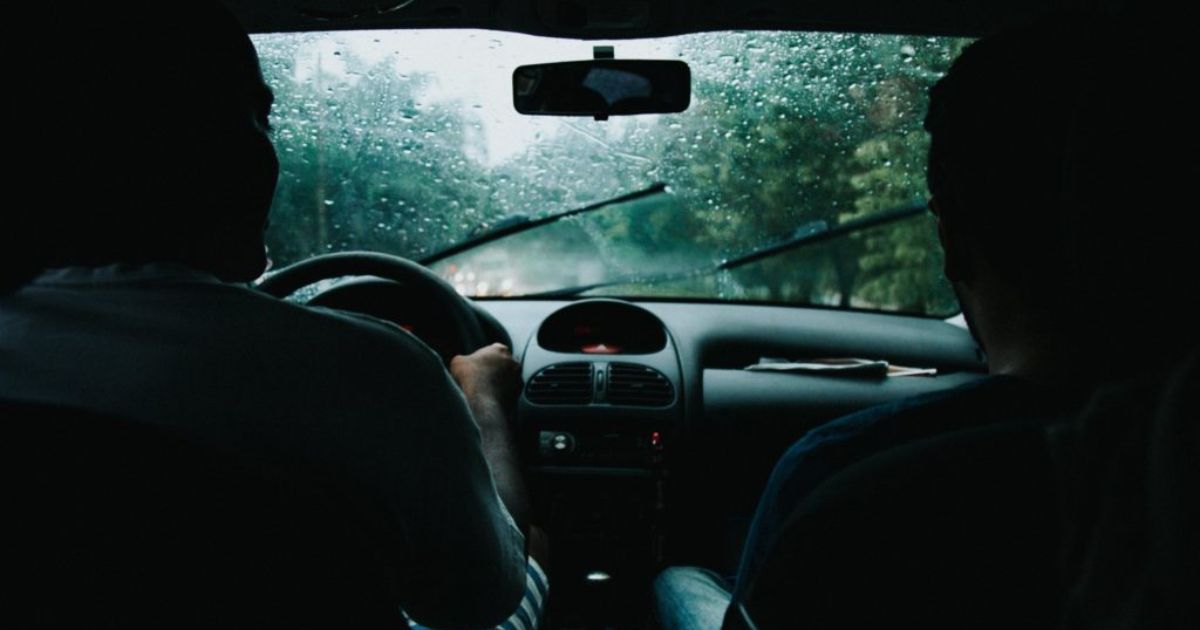Drivers should always use their windshield wipers when it rains. Typically, drivers have to put their headlights on when it rains in Virginia. The law says you should have your lights on if your wipers are activated. The only exception to the rule is if someone is using their wipers intermittently.
It’s usually a good idea to put on your beams even in light rain. Rain usually falls in darker than usual weather conditions, and it makes sense to make yourself as visible as possible.
State Law Regarding Headlight Usage in Virginia
The Code of Virginia §46.2-1030 provides the law surrounding the use of headlights while driving. This section points out every vehicle on the road must display lighted headlights and illuminating device from sunset to sunrise.
The code also states that drivers should put their headlights on during rain, fog, smoke, snow, sleet, insufficient light, or any other unfavorable weather conditions that reduce visibility to 500 feet or less.
The law states that this usage does not apply to instances when windshield wipers are used intermittently in misting rain, sleet, or snow. The rule that drivers typically have to put their headlights on when it rains in Virginia holds in other states. North Carolina has a similar law. The NC General Assembly states drivers must put their headlights on when visibility is less than 400 feet.
Using High Beams to Prevent Weather-Related Accidents
Rain poses a serious danger to motorists over the winter months. January and February after the holidays are particularly hazardous months. People drive to work in cities such as Norfolk, Newport News, and Virginia Beach in the dark and return home in the dark. Congestion, rain, and darkness is a particularly hazardous combination and accidents often spike early in the year.
Virginia, like many other states, also has rules about the use of high beams that can blind other drivers. Some of these laws include:
- Drivers must dim high beams when approaching traffic within 500 feet.
- Drivers also must dim high beams when they are following within 200 feet of another vehicle.
- High beams should not be used in cities and towns unless the street lacks lighting.
Drivers who fail to put on their lights or incorrectly use full beams may cause accidents. However, the Virginia headlights law points out a driver’s failure to put on his or her lights does not automatically establish negligence in a personal injury claim, nor is it necessarily a defense to a lawsuit. If you are driving in the rain on the highways of Virginia, always take precautions to make yourself as visible as possible within the law. Slow down and keep your distance.
Useful Virginia Wet Weather Driving Tips
- Be visible: Ensure your headlights and taillights are on and your brake lights and turn signals work correctly.
- Inflate and maintain your tires: Tires should be inflated to the correct pressure. Under-inflated tires give you less grip on a wet highway. Check your tire pressures at least twice a month and make sure your tires have enough tread. In 2018, a study by AAA found driving with 4⁄32 inch of tread depth left could increase the stopping distance of a passenger car by up to 87 feet in slick conditions.
- Don’t cruise: Avoid using cruise control in wet conditions because you may have less control on the road. If you hydroplane when using cruise control, your car can suddenly accelerate to a high rate of speed.
- Be cautious when in the rain: The road surface is often at its most sick when the rain first falls. It can mix with oils and cause vehicles to skid. More accidents occur early in rain showers.
- Don’t speed: Cars and trucks are more prone to hydroplaning at higher speeds when the drivers have less control over their vehicles. Aim to decrease your speed by about a third in wet weather. When traveling at 70 mph, allow up to 320 feet to stop. That is more than the length of two football fields. It’s prudent to drive well below the speed limit in wet conditions.
- Don’t brake too hard: Sudden braking movements cause less traction in wet weather. Maintain a steady braking pressure but avoid abrupt braking on wet roads.
Contact an Attorney to Learn More About Headlight Usage in the Rain in Virginia
We know plenty about the dangers of slick weather driving, but we still see irresponsible driving and too many wet weather accidents in Virginia. Please call our Virginia auto accident team at Cooper Hurley Injury Lawyers for a free consultation if you suffered injuries in a crash.






